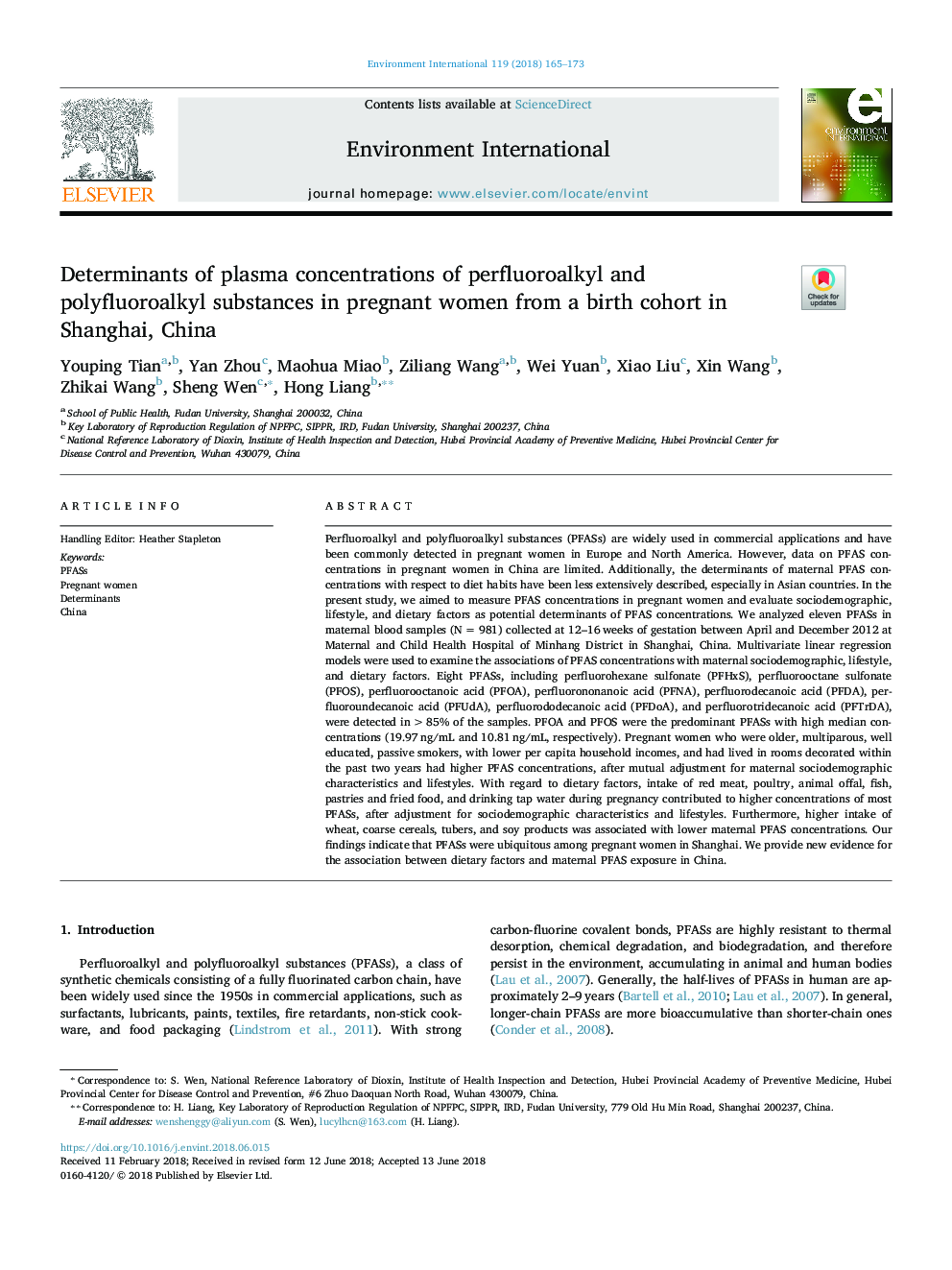| کد مقاله | کد نشریه | سال انتشار | مقاله انگلیسی | نسخه تمام متن |
|---|---|---|---|---|
| 8855051 | 1619011 | 2018 | 9 صفحه PDF | دانلود رایگان |
عنوان انگلیسی مقاله ISI
Determinants of plasma concentrations of perfluoroalkyl and polyfluoroalkyl substances in pregnant women from a birth cohort in Shanghai, China
ترجمه فارسی عنوان
عوامل تعیین کننده غلظت پلاسمایی پرفورورالکلی و پلی فلوئورا آلکیل در زنان باردار از زمان تولد در شانگهای، چین
دانلود مقاله + سفارش ترجمه
دانلود مقاله ISI انگلیسی
رایگان برای ایرانیان
موضوعات مرتبط
علوم زیستی و بیوفناوری
علوم محیط زیست
شیمی زیست محیطی
چکیده انگلیسی
Perfluoroalkyl and polyfluoroalkyl substances (PFASs) are widely used in commercial applications and have been commonly detected in pregnant women in Europe and North America. However, data on PFAS concentrations in pregnant women in China are limited. Additionally, the determinants of maternal PFAS concentrations with respect to diet habits have been less extensively described, especially in Asian countries. In the present study, we aimed to measure PFAS concentrations in pregnant women and evaluate sociodemographic, lifestyle, and dietary factors as potential determinants of PFAS concentrations. We analyzed eleven PFASs in maternal blood samples (Nâ¯=â¯981) collected at 12-16â¯weeks of gestation between April and December 2012 at Maternal and Child Health Hospital of Minhang District in Shanghai, China. Multivariate linear regression models were used to examine the associations of PFAS concentrations with maternal sociodemographic, lifestyle, and dietary factors. Eight PFASs, including perfluorohexane sulfonate (PFHxS), perfluorooctane sulfonate (PFOS), perfluorooctanoic acid (PFOA), perfluorononanoic acid (PFNA), perfluorodecanoic acid (PFDA), perfluoroundecanoic acid (PFUdA), perfluorododecanoic acid (PFDoA), and perfluorotridecanoic acid (PFTrDA), were detected in >85% of the samples. PFOA and PFOS were the predominant PFASs with high median concentrations (19.97â¯ng/mL and 10.81â¯ng/mL, respectively). Pregnant women who were older, multiparous, well educated, passive smokers, with lower per capita household incomes, and had lived in rooms decorated within the past two years had higher PFAS concentrations, after mutual adjustment for maternal sociodemographic characteristics and lifestyles. With regard to dietary factors, intake of red meat, poultry, animal offal, fish, pastries and fried food, and drinking tap water during pregnancy contributed to higher concentrations of most PFASs, after adjustment for sociodemographic characteristics and lifestyles. Furthermore, higher intake of wheat, coarse cereals, tubers, and soy products was associated with lower maternal PFAS concentrations. Our findings indicate that PFASs were ubiquitous among pregnant women in Shanghai. We provide new evidence for the association between dietary factors and maternal PFAS exposure in China.
ناشر
Database: Elsevier - ScienceDirect (ساینس دایرکت)
Journal: Environment International - Volume 119, October 2018, Pages 165-173
Journal: Environment International - Volume 119, October 2018, Pages 165-173
نویسندگان
Youping Tian, Yan Zhou, Maohua Miao, Ziliang Wang, Wei Yuan, Xiao Liu, Xin Wang, Zhikai Wang, Sheng Wen, Hong Liang,
